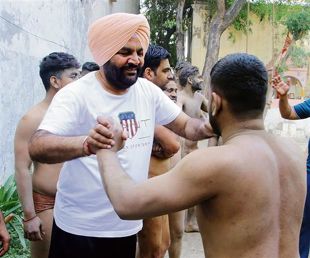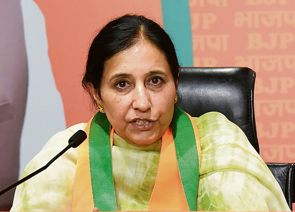
Shriniwas Joshi
Himachal Pradesh is the land of Gods. Every village here has its own deity known as Gram Devta. People here believe that the state is protected and sheltered by the power of the local deities. They deem that as long as the local deity is happy with them, their fields will produce good crops, fruit and vegetable. Hunger stays far away from their village. These deities possess peculiar personality traits and have their own individual entity. Recently, I had gone to Chikher, a village about 50 kilometres from Shimla. PR Ramesh, an octogenarian social activist, was my guide. He is also the Dewan or the esteemed devotee of Chikhereshwar deity. Chikhereshwar has stabbed nose and is worshipped in six out of 11 parganaas (a revenue subdivision) of Theog and in big areas of former princely states of Madhaan and Ghoond.
I had also seen a temple of Shikhru Dev at Rohru and got confused how the deity of Theog reached Rohru but later I found that Shikhru has a different origin than that of Chikhereshwar. So, these are two different godlings.
There was a milkmaid at Chikher who used to take her cows out for grazing. At evenings, when she milked her cows, she was surprised that the quantity of milk was much less than her expectation. It became a continuous experience. Instead of sitting at a place and letting the cows graze on their own, one day she followed them and found that the cows would stand near a bush called ‘Chhaambar’ and bathe it with milk. Rural people use ‘Chhaambar’ medicinally as blood-stopper whenever there is a cut in the body. She was carrying a digger (Chikher in Pahaari) with her and she decided to dig the bush out but when she was in the process, her Chikher struck against something metallic and that was a mask whose nose she had inadvertently stabbed.
People of the area then named it Chikhereshwar Dev and placed it in a temple. The temple stood for long and faced centuries of sun and shower ultimately, weather-beaten, gave way. The villagers collected large sums of money to raise an aesthetically built temple with exquisite carvings (See photo). The stone-laying ceremony was done on the March 23, 2011, and the construction was completed on May 2, 2014, the day on which the temple was opened for the public. I think that three years with all its wood-carvings is a trifle period of time.
The ladders in the temple are made of a single piece of wood and one has to climb to the second floor to pay obeisance to the devta. The devta and the other deities around him totalled five, an auspicious number. In Shaivism, we have five-fold manifestation of the primal being; in Vaishnavism, we have the five aspects of Vishnu and in Vedanta, we have the five qualities of the Supreme Being. The five devtas here are main Chikhereshwar, back of Chikhereshwar called Kanesaa Mool, Banthiyaa Dev, Bajjreshwari Devi and Jadraai Devta. Adjacent to Chikhereshwar Dev temple is another temple called Devoora where Goddess Durga is venerated during a festive occasion.
It has coloured folkish relief work, based mainly on Dashavatar, on wood and is so astounding that one involuntary praises the hands that carved these. Mohan Lal, head Kardaar (worker), has a pleasing personality and showed me every corner of the temples lovingly (See photo). In the complex of the temple, there is a stone erection (shila) of the milkmaid who was responsible for locating Chikhereshwar. The devta had blessed her that whenever a cow procreated, the first milk would be showered on her shila and that was being followed to date. This process is called Hashi-Nishi, which means that no milk of the fresh mother-cow can be taken before offering it to the shila. Once done, the shackle gets broken and the use of milk is opened.
If we go to the Vedic times, we find that nature in its raw form was venerated. We have been venerating the earth, the water and the mountain peaks since time immemorial. Chikhereshwar, I sense, is like venerating the bhoo (earth) because he originated from there and is a form of bhoo-devta.



























